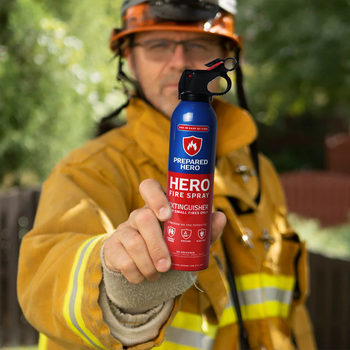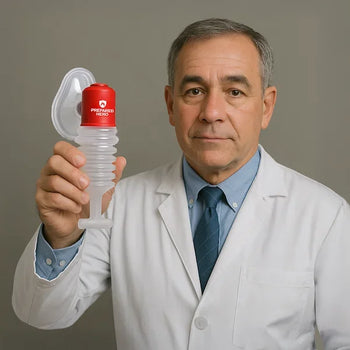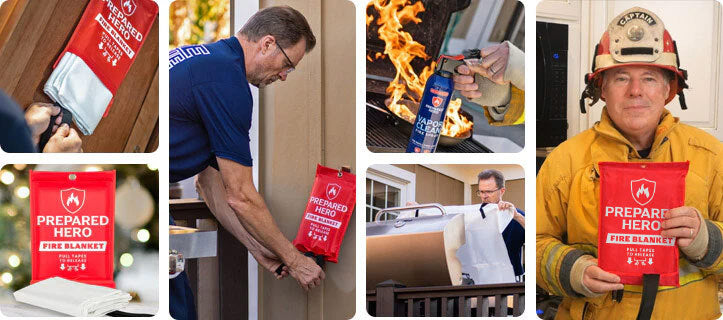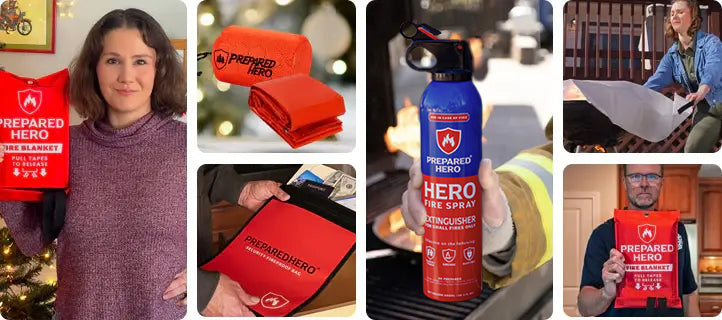Where you put your smoke detectors matters just as much as installing them. Proper placement makes sure they can detect...
Cooking oil is a kitchen staple, and knowing how to handle it is a must for your kitchen and the environment. If you’re wondering how to dispose of cooking oil, you’re at the right place.
Disposing of cooking oil might seem tricky, but it doesn’t have to be. Whether you want to throw or reuse it, we’re here to help. In this post, we’ll talk about how to safely dispose of and recycle oil.
Understanding Cooking Oil

Knowing the ins and outs of cooking oil helps before throwing it out. Cooking oil is fat that’s been heated to fry, sauté, or roast food. Common types include vegetable oil, animal fats, and coconut oil.
After use, cooking oil contains food bits, burnt particles, and crumbs. In this case, it’s not safe to reuse. While used oil might seem harmless when liquid, pouring it down the drain can cause problems. Used oil becomes a slow-moving glue once it cools down. Animal fats like lard and bacon grease solidify even faster.
It then sticks to the pipes, builds up, and clogs them. As a result, it can ruin your plumbing and cause you big time. On a larger scale, it can damage sewers and water facilities.
So don’t treat used oil like dirty water when you’re done cooking. It needs to be disposed of safely. The way you get rid of it matters to your kitchen and the environment.
Why You Shouldn’t Pour Cooking Oil Down the Drain

Pouring used cooking oil down the drain might seem like a quick way to get rid of it, but it’s one of the worst things you can do to your plumbing and the environment. Here are the top reasons why you shouldn’t pour cooking oil down the drain:
1. It Clogs Your Pipes
Hot oil thickens once it cools down. The liquid oil solidifies and sticks to your pipes. Over time, more gunk builds up, including crumbs, soap scum, and food bits. These narrow your pipe until nothing can get through. As a result, your sink won’t drain. While you can call a plumber to fix this, it will come with a hefty price.
2. It Creates Fatbergs
A fatberg is a massive blob of hardened grease, oil, and non-biodegradable junk lurking in the city’s sewer system. It sounds like something you’d see in horror movies, except it’s real.
These giant clogs have caused problems in cities around the world, with some weighing thousands of pounds. They’re produced when fats in the sewer system go through something called saponification, a process where they react with chemicals in wastewater and turn into a giant, solid chunk of soap. Gross, right?
Plus, fatbergs don’t just sit there. They block up entire sewer lines, cause backups, and cost thousands to millions of dollars to remove. And yes, a little bit of cooking oil adds to the mess.
3. It Harms the Environment
Even if the cooking oil goes through your home’s plumbing and doesn’t turn into a fatberg right away, it’s still bad news. They can still make their way into rivers, lakes, and oceans once they hit the sewer system or storm drains.
There, they form surface films that mess with oxygen levels and hurt aquatic life. Fish, birds, and other animals also suffer because of oil pollution. Plus, it starts with tiny, everyday choices like pouring cooking oil down the drain.
4. It Costs a Lot
Clogged pipes have to be fixed by plumbers, and they’re not cheap. If the oil clogs something deep in your plumbing or causes a backup, you could be dealing with water damage, repairs, and mold. It’s not just a small kitchen issue, but a big, expensive headache.
How to Dispose of Cooking Oil

Got leftover cooking oil and want to throw it away? Don’t pour it down the sink. You can safely dispose of it without causing problems. Here’s how to do it:
1. Cool, Store, and Toss
Let the oil cool completely first. Once done, pour it into a sealable container, like plastic bottles, takeout boxes, and milk cartons. Then, seal it tight and toss it in the trash. You can also freeze the oil to make cleanup easier. Doing this turns it solid, which is easier to handle. Just don’t use plastic bags because they can rip, leak, and leave a big mess.
2. Give It to a Local Restaurant
Restaurants usually have established systems for disposing of large quantities of cooking oil. You might consider asking a nearby restaurant if they accept used oil. Some might be able to help, especially if you’re a frequent customer.
3. Contact Hazardous Waste Services
Some cities have household hazardous waste programs that will take used cooking oil. They can handle waste that doesn’t belong in regular trash. Look up your local household hazardous waste facility to get a free quote and set a pickup schedule.
4. Use a Grease Disposal System
A grease disposal system is built into the plumbing and separates oil from water before it goes down the drain. Most homes don’t have this setup, but it’s worth knowing. Commercial kitchens usually have it. Unless you're running a restaurant or home-based food business, you're better off with the methods above.
5. Compost It
Used vegetable oils made from soy, corn, sunflower, olive, and coconut are compost-friendly in small amounts. Worms love them, and they help enrich your compost pile. However, too much vegetable oil can suffocate your compost and attract pests. Don’t overdo it. A small drizzle now and then is all you need.
6. Turn It Into Solid Waste
You can also get rid of used oil by mixing it with stuff like sawdust, sand, flour, or cat litter. Toss it in the trash once it soaks everything up and turns solid. This works great if you don’t have a container and want to avoid spills.
How to Save Cooking Oil for Reuse

You can sometimes reuse oil, especially if it’s made that way, and you only used it once. Reusing cooking oil is easy, practical, and adds flavor to your meals. Here’s how to do it right:
1. Decide If It’s Worth Saving
Not all leftover oil is worth keeping. Ask yourself if the oil got too hot, or if you plan to reuse it soon. If you used the oil at extremely high temperatures, it likely broke down and won’t be good enough for reuse. If this is the case, dispose of it using the steps above.
However, you can likely reuse it if the oil was gently used, like for pan-frying rice or chicken. You should also use it again soon because saved oil doesn’t last as long as fresh oil.
2. Strain Out the Gunk
Strain out all crumbs and bits before saving the oil. To do this, let it completely cool down first. Then, pour it through a fine mesh strainer or cheesecloth. Doing this helps prevent the oil from going rancid too fast. It also helps prevent the leftover bits from burning the next time you use the oil.
3. Store It Properly
Use a glass jar, resealable bottle, or any container with a tight lid to store the oil. Then, label it with what you used it for (e.g., “fried shallots” or “bacon fat”) and when. Next, store it in a cool, dark place. You can keep it in your cupboard or pantry for short-term use. Store it in the fridge if you’re keeping it longer. However, your best bet is to reuse it as soon as possible.
4. Know When to Stop Reusing
You can reuse cooking oil a few times, but it will break down. If it smells off, foams heavily, smokes too quickly, or has a weird texture, it’s time to throw it out. Don’t risk your health. Rancid oil can cause cellular damage and has been associated with digestive distress, diabetes, and, in worst cases, Alzheimer's disease.
5. Make It Part of Your Cooking Routine
Some oils get better with use. For instance, duck fat from a well-rendered breast is liquid gold. It’s perfect for frying potatoes or making flaky pastry. Bacon grease can also add a smoky touch to sautéed veggies and scrambled eggs. Even leftover vegetable oil from browning chicken can be used to make a sauce or add flavor to soup.
How to Clean Up an Oil Spill at Home

Whether it’s a kitchen slip or a driveway drip, cleaning up an oil spill doesn’t have to be complicated. Here’s how to do it without spreading the mess:
1. Don’t Wipe It Yet
It’s tempting to grab a paper towel and swipe, but that just spreads the oil. Use something absorbent instead, like flour, baking soda, cornstarch, salt, or cat litter. Cover the spill completely and let it sit for a few minutes.
2. Scoop It Up
Once the oil has been absorbed and the powder looks clumpy or dry, scoop it up using a paper towel, dustpan, or broom. Then, toss everything into a container, seal it, and throw it into the trash.
3. Wipe the Residue
Pour some dish soap onto a sponge or cloth and wipe the area clean. Alkaline soap cuts through leftover oil well.
4. For Bigger Spills
Use cat litter or sawdust if the mess is outside, like in a garage or driveway. Let it sit, sweep it up, then scrub the spot using hot water and a degreaser. You might have to do this more than once if the stain is stubborn.
How to Tell if Leftover Cooking Oil Is Rancid

Not sure if your leftover cooking oil is still good? Give it a sniff. If it smells bitter, stale, or soapy, it’s likely gone rancid. Fresh oil usually has a clean or neutral smell, so any weird smell means it’s time to throw it out.
You can also check how it looks. Some cloudiness is normal when you store it in the fridge. However, don’t risk it if your oil is dark, has a strange color, or looks foamy at room temperature.
Is Used Cooking Oil Flammable?
Used cooking oil is flammable. Like fresh oil, it can catch fire if it gets hot enough. In fact, old oil can sometimes burn faster because it’s been broken down by heat and mixed with food bits. It can also ignite once it reaches its smoke point and keeps heating up.
If an oil or grease fire occurs in the kitchen, don’t pour water on it. It’ll only make things worse. Check out how to put out a grease fire here.
Having fire prevention tools nearby helps. A fire blanket can smother small flames quickly, while a fire spray is a great backup if the fire spreads. They’re easy to use and perfect for kitchen fires. Remember, a small flame can turn into a major fire in 30 seconds, so being ready makes a huge difference.
Do you want reliable, easy-to-use, and affordable tools to put out small fires before they spread? Check out Prepared Hero’s fire prevention tools here, and get up to 51% off on certain items.
Can I Pour Vegetable Oil on the Ground?

Pouring vegetable oil on the ground might seem harmless, but it’s a bad idea. It can damage soil, harm animals, and clog nearby sewer systems. Always let it cool down, then toss it in a sealed container and put it in the trash.
What to Do With Expired Cooking Oil?
Never pour expired cooking oil down the drain because it can clog your pipes. Seal it in a container and toss it in the trash instead. You can also compost small amounts or recycle it for lubricating tools or preventing rust. Some areas also offer recycling programs, so check with your local waste disposal office.
How Do Restaurants Dispose of Cooking Oil?

Restaurants don’t just throw out used cooking oil. They carefully dispose of it to avoid pollution and follow regulations. Most use grease dumpsters placed behind the building to store leftover oil safely. These dumpsters are regularly emptied by recycling companies that turn the oil into biofuels, animal feed, or other products.
They also have grease traps in the kitchen. They help catch fats, oils, and grease before they reach the sewer system. Waste management services clean out these traps and handle the recycling or proper disposal. It’s a system that helps restaurants stay clean, safe, and eco-friendly while getting rid of used oil.
What Dissolves Cooking Oil?
Cooking oil can be tricky to clean, but a few things can break it down. Regular dish soap is one of the easiest ways to cut through grease. Use it as is (don’t dilute it) and scrub with a sponge for best results.
You can also use rubbing alcohol or a degreaser for stronger or older oil stains. If you’re dealing with a tougher mess, industrial solvents like hexane or acetone do a great job. However, you should use it with caution and in well-ventilated areas.
How to Thicken Oil Before Throwing It Away

Got leftover cooking oil and not sure what to do with it? Don’t pour it down the drain. Here are the top ways to thicken or solidify it before disposal:
Absorbent Materials
One of the easiest ways to thicken used cooking oil is to mix it with something absorbent. Flour, cat litter, and sawdust work well. Just let the oil cool down, then stir in your chosen material until it forms a thick paste or clump. You can also use non-compostable food scraps or spent flour from baking. Once it thickens, wrap it in parchment paper so it’s easier to dispose of.
Commercial Oil Solidifiers
Oil solidifiers are specifically made to solidify cooking oil. They usually come as powders or in small sachets that you directly add to hot oil. As the oil cools, the ingredients in the product react and turn the oil into a solid block. Make sure to follow the instructions on the packaging to get the best results.
Stearic Acid
Stearic acid powder works, too. It dissolves in hot oil and helps it firm up as it cools. Just stir the powder into the hot oil and wait for it to set. This is a more hands-on method, but it works.
Freezing
Another no-fuss method is to freeze the oil. Pour the cooled oil into a freezer-safe container and freeze it until it becomes solid. You can also throw the whole container away or slightly thaw it to remove the solidified oil before disposal.
Conclusion
Disposing of cooking oil doesn’t have to be a mess. Just let it cool, pick the method that works best for you, and throw it away. Never pour the oil down the drain, and check local rules if you’re unsure. A little care now saves you plumbing headaches later and helps keep the environment clean. Stay safe, hero!


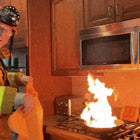 Fire
Fire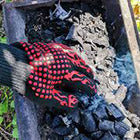 Safety
Safety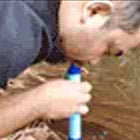 Survival
Survival Protection
Protection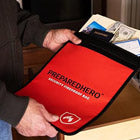 New
New
 Fire
Fire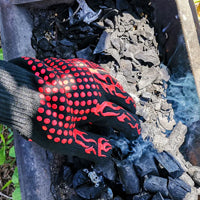 Safety
Safety Survival
Survival Protection
Protection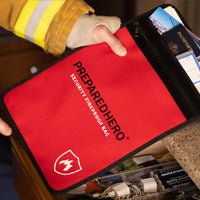 New
New



